希釈した第四級アンモニウム塩配合の洗浄除菌剤は、ボトルなどへ長期間にわたってつぎ足し使用すると、微生物汚染を受ける可能性があります。したがって、希釈した液を入れるボトルは毎回(1日ごとなど)の洗浄乾燥が必要です。
ベンザルコニウム塩化物や両性界面活性剤などの低水準消毒薬は、製品自体の汚染のみならず1-3)、不適切な使用でも微生物汚染を受けることがまれではありません4-16)。おもな汚染菌はセパシア菌(Burkholderia cepacia)、緑膿菌、セラチア(Serratia marcescens)、アルカリゲネス菌(Alcaligenes xylosoxidans)およびマルトフィリア菌(Stenotrophomonas maltophilia)などのグラム陰性桿菌です。表には、低水準消毒薬の微生物汚染パターンとその防止法を示しました。この他のパターンとして、製品希釈時の水の細菌汚染が原因になることもあります17-19)。
なお、次亜塩素酸ナトリウムが微生物汚染を受けることはありません。一方、アルコールはたとえ60vol%以上であっても、くり返しのつぎ足し使用で少量の芽胞汚染を受けることがあります。また、ポビドンヨードでは製造時での水の細菌汚染に起因する製品の細菌汚染事例があります20,21)。
| 使用法 | 汚染パターン | 防止法 |
|---|---|---|
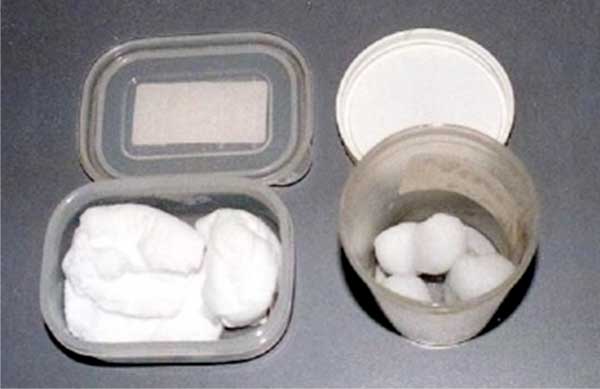 綿球に含浸 |
長期間にわたる分割使用やつぎ足し使用 | ・調製後は24時間以内に廃棄する ・滅菌済みの個包装製品を用いる |
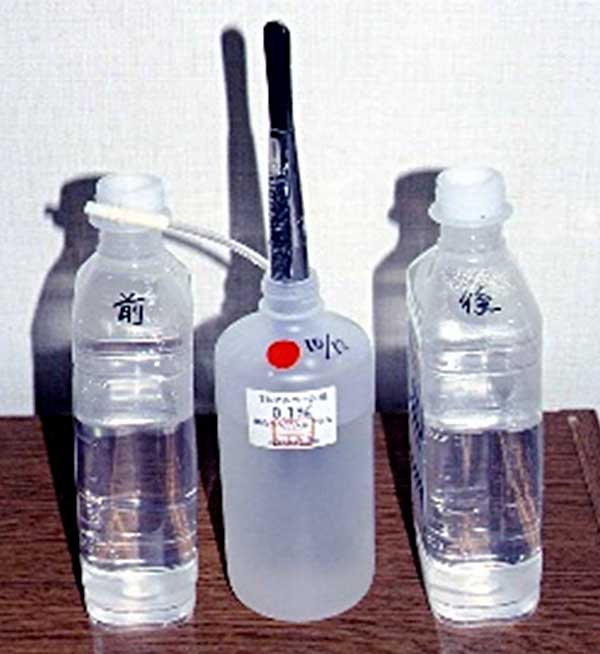 気管内吸引チューブの浸漬 |
くり返し使用 | ・8vol% エタノール添加の0.1%ベンザルコニウム塩化物(ヤクゾールER液0.1など)を用いる ・使い捨ての気管内吸引チューブを用いる |
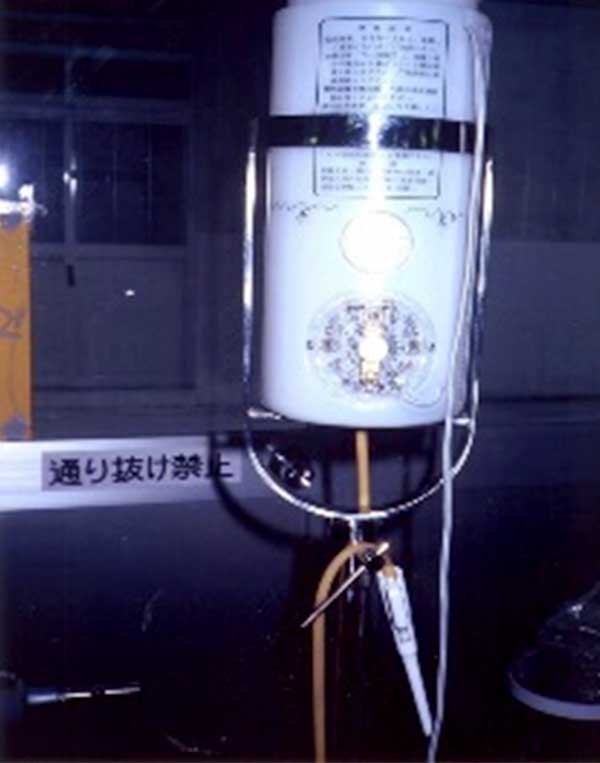 局所洗浄装置 (イルリガートル) |
長期間にわたる分割使用やつぎ足し使用 | ・滅菌生理食塩水(100mL入りなど)と局所洗浄用ノズル(使い捨て製品)を代用する |
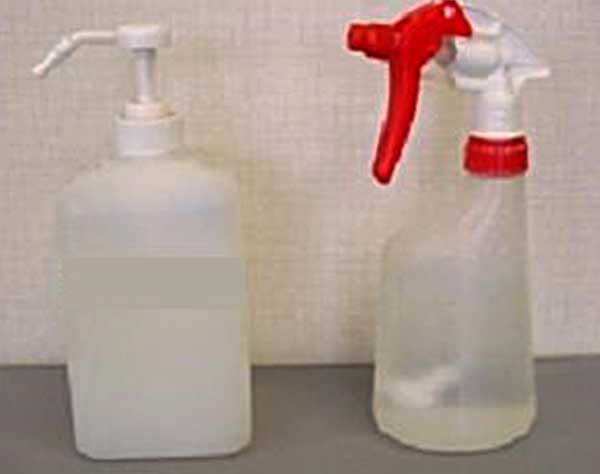 ノズル式容器 |
・つぎ足し使用は行わない | |
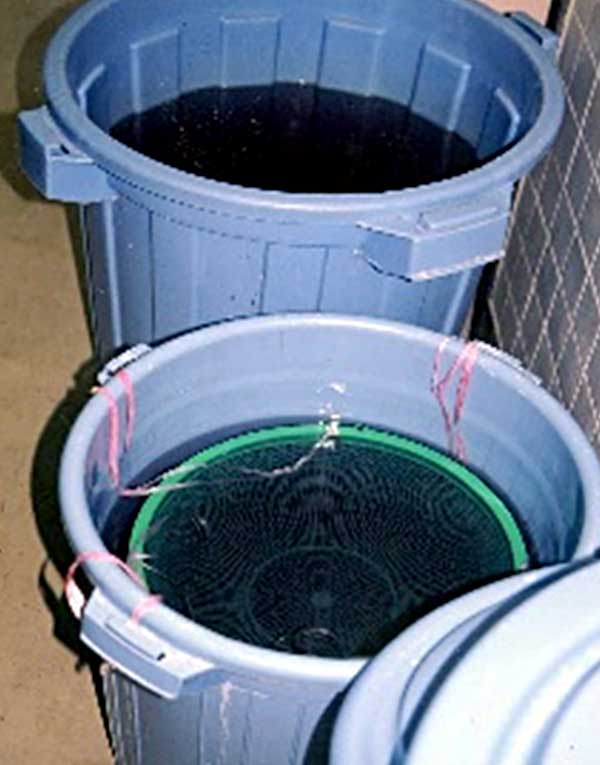 バケツ |
・バケツは24時間ごとに乾燥させる | |
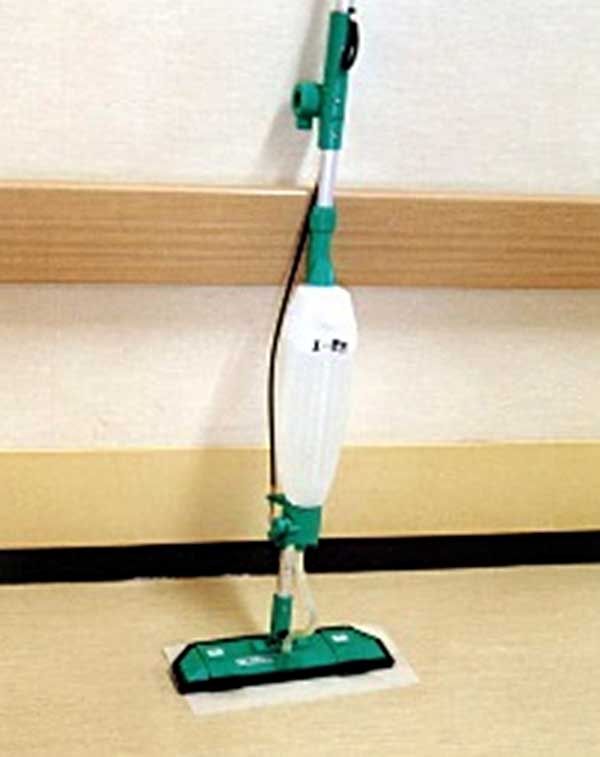 タンク式モップ |
・8vol%以上のアルコールを添加する |
- 引用文献
-
- Oie S, et al: Bacterial contamination of commercially available ethacridine lactate(acrinol) products. J Hosp Infect, 34: 51-58, 1996
- Oie S, et al: Microbial?contamination?of a?disinfectant-soaked?unwoven?cleaning?cloth. J Hosp Infect, 82: 61-3, 2012
- Oie S, et al: Microbial?contamination?of?benzalkonium chloride?products. Am J Health Syst Pharm, 55: 2534, 2537, 1998
- Oie S, et al: Microbial contamination of antiseptics and disinfectants. Am J Infect Control, 24:389-395, 1996
- Oie S, et al: Microbial contamination of antiseptic-soaked cotton balls. Biol Pharm Bull, 20: 667-669, 1997
- Oie S, et al: Microbial?contamination?of?water-soaked?cotton?gauze?and its?cause. Microbios, 104: 159-166, 2001
- 伊賀地域医療事案対策本部特別調査班:伊賀保健所管内の医療機関で発生した事案についての調査報告書.2008
- Nakashima AK, et al: Epidemic septic arthritis caused by Serratia marcescens and associated with a benzalkonium chloride antiseptic. J Clin Microbiol, 25: 1014-1018, 1987
- Olson RK, et al: Cluster of postinjection abscesses related to corticosteroid injections and use of benzalkonium chloride. West J Med, 170: 143-147, 1999
- 尾家重治, 他: 気管内吸引チューブの微生物汚染とその対策. 環境感染, 8: 15-18, 1993
- Oie S, et al: Microbial contamination of in-use lubricants for non-touch urethral catheters in intermittent self-catheterization. Biol Pharm Bull, 23: 781-783, 2000
- Hakuno H, et al: Microbial contamination of disinfectants used for intermittent self-catheterization. Jpn J Infect Dis, 63: 277-279, 2010
- McAllister TA, et al: Serratia marcescens outbreak in a paediatric oncology unit traced to contaminated chlorhexidine. Scott Med J, 34: 525-528, 1989
- Jumaaa P, et al: Outbreak of gentamicin, ciprofloxacin-resistant Pseudomonas aeruginosa in an intensive care unit, traced to contaminated quivers. J Hosp Infect, 28: 209-218, 1994
- Pegues DA, et al: Epidemic gram-negative bacteremia in a neonatal intensive care unit in Guatemala. Am J Infect Control, 22: 163-171, 1994
- Bosi C, et al: Serratia marcescens nosocomial outbreak due to contamination of hexetidine solution. J Hosp Infect, 33: 217-224, 1996
- Tena D, et al: Outbreak of long-term intravascular catheter-related bacteremia due to Achromobacter xylosoxidans subspecies xylosoxidans in a hemodialysis unit. Eur J Clin Microbiol Infect Dis, 24: 727-732, 2005
- Lee S, et al: An outbreak of Burkholderia cenocepacia associated with contaminated chlorhexidine solutions prepared in the hospital. Am J Infect Control, 41: e93-e96, 2013
- Maroye P, et al: Investigation of an outbreak of Ralstonia pickettii in a paediatric hospital by RAPD. J Hosp Infect, 44: 267-272, 2000
- Berkelman RL, et al: Pseudobacteremia attributed to contamination of povidone-iodine with Pseudomonas cepacia. Ann Intern Med, 95: 32-36, 1981
- 福井 徹,ほか:Burkholderia cepacia (Pseudomonas cepacia) に汚染されたポビドンヨード製剤に関する報告.環境感染, 10: 36-39, 1995
尾家 重治(山陽小野田市立 山口東京理科大学 薬学部)
2020年05月
